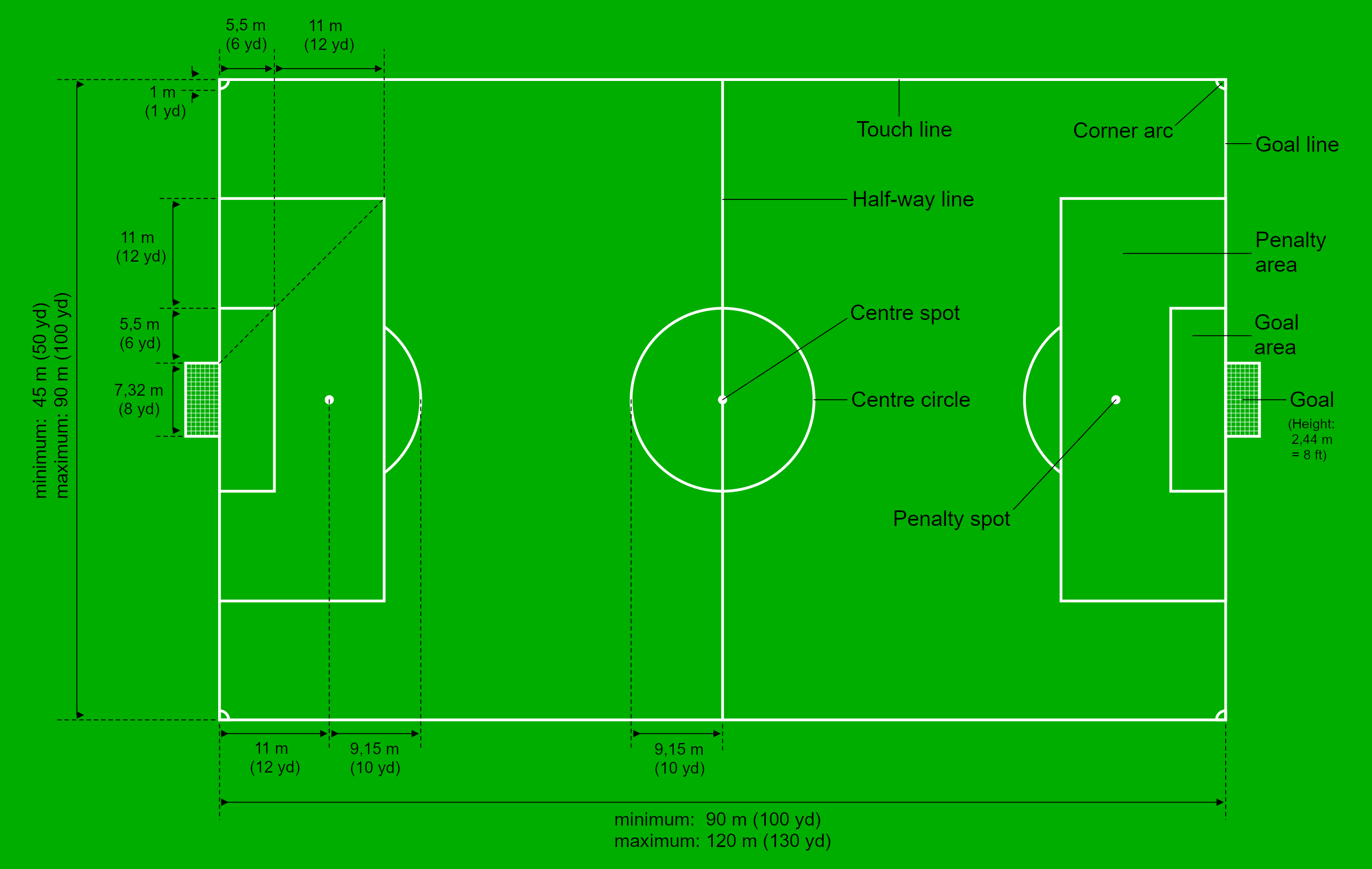- Get link
- X
- Other Apps
The Football Field: The Hallowed Ground of the Beautiful Game
The football field, also known as the pitch, is the sacred space where the game of football comes to life. It is the canvas upon which players showcase their skills, teams battle for victory, and fans experience the thrill of the beautiful game. The dimensions, markings, and surface of the field all play a crucial role in shaping the dynamics of the game. In this article, we delve into the world of the football field, exploring its key elements, significance, and the impact it has on the game.
Dimensions and Layout:
The football field is a rectangular area with specific dimensions that vary depending on the level of play. The dimensions of the field are regulated by the governing bodies of football, such as FIFA and UEFA, to ensure consistency and fairness. The standard dimensions for a football field can range from 100 to 110 meters in length and 64 to 75 meters in width. These dimensions provide enough space for players to maneuver and showcase their skills while maintaining a balanced playing environment.
Markings and Lines:
The football field is marked with lines that serve various purposes and help define the boundaries of play. The main lines on the field include the touchlines (sidelines) and the goal lines. The touchlines run the length of the field, while the goal lines extend between the goalposts. These lines create the boundaries within which the game is played and determine if the ball is in or out of play.
In addition to the touchlines and goal lines, the field is also marked with other lines and markings that have specific purposes. The halfway line divides the field into two equal halves, serving as the starting point for kick-offs at the beginning of each half and after a goal is scored. The center circle, located at the center of the field, is where the kick-off takes place. The penalty area, also known as the box, is marked with two lines that extend 18 yards (16.5 meters) from the goal line and meet at a right angle. This area is where fouls committed by the defending team can result in a penalty kick for the attacking team. The goal area, marked by two lines parallel to the goal line, is where goal kicks are taken and where the goalkeeper has certain privileges and restrictions.
Goalposts and Crossbar:
The goalposts and crossbar are integral components of the football field. Located at the center of each goal line, they serve as the target for scoring goals. The goalposts consist of two vertical posts that are equidistant from the corner flags and firmly anchored into the ground. The crossbar connects the top of the two goalposts, creating a rectangular space between them. The dimensions of the goalposts and crossbar are standardized to ensure consistency across different fields and competitions.
Playing Surface:
The playing surface of a football field is of utmost importance, as it directly affects the quality of play and the safety of the players. The most common type of playing surface is natural grass, which provides a traditional and authentic feel to the game. Well-maintained grass surfaces offer good traction, ball control, and a consistent bounce. However, natural grass requires regular maintenance, including watering, mowing, and fertilizing, to ensure its optimal condition.
In recent years, artificial turf has gained popularity as an alternative playing surface. Artificial turf, made of synthetic fibers and filled with rubber or sand, offers durability, all-weather playability, and reduced maintenance requirements. While artificial turf provides a consistent playing surface, some players argue that it lacks the natural feel and bounce of real grass.
Impact on the Game:
The dimensions, markings, and playing surface of the football field have a significant impact on the game itself. The size of the field influences the style of play, as larger fields may encourage more expansive and possession-based football, while smaller fields may lead to a more compact and direct approach. The markings and lines on the field dictate the rules of play, including offside decisions, fouls within the penalty area, and ball in/out of play determinations.
The playing surface can also affect the pace and style of play. Natural grass surfaces may slow down the ball and require players to adjust their technique and control. On the other hand, artificial turf can provide a faster surface with a consistent ball roll, allowing for a more rapid and dynamic style of play.
Conclusion:
The football field is more than just a patch of grass or artificial turf. It is the stage upon which the drama of the beautiful game unfolds. The dimensions, markings, goalposts, and playing surface all contribute to the dynamics and flow of the game. The football field serves as the canvas for players to showcase their skills, teams to battle for victory, and fans to witness the magic of the sport. It is a hallowed ground that holds a special place in the hearts of football enthusiasts around the world, symbolizing the spirit, passion, and unity that football brings to communities worldwide.
- Get link
- X
- Other Apps

Comments
Post a Comment